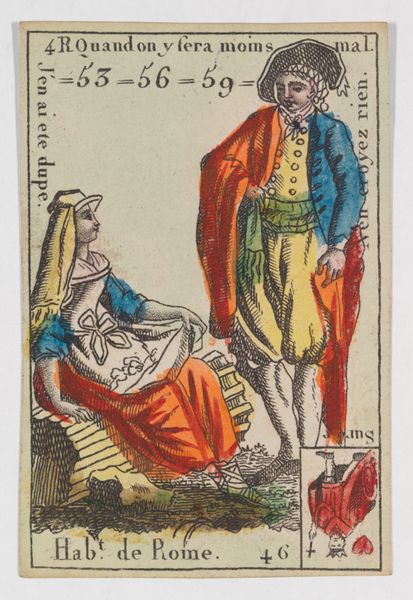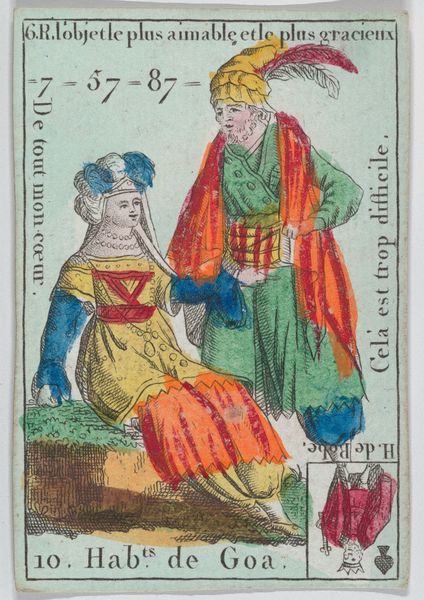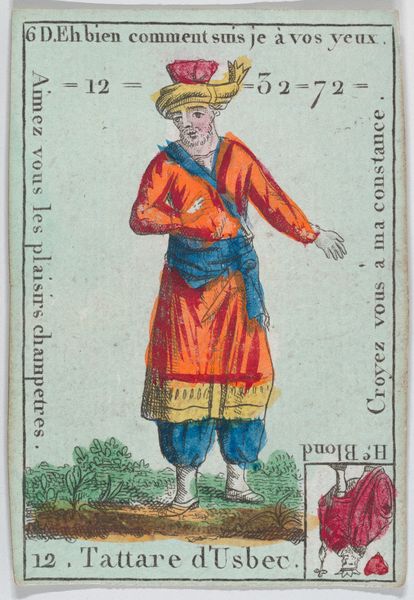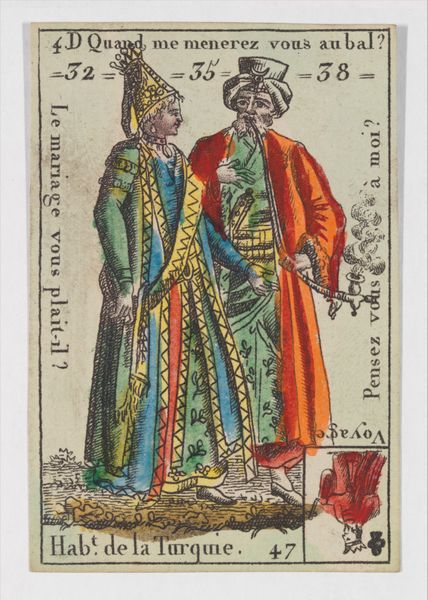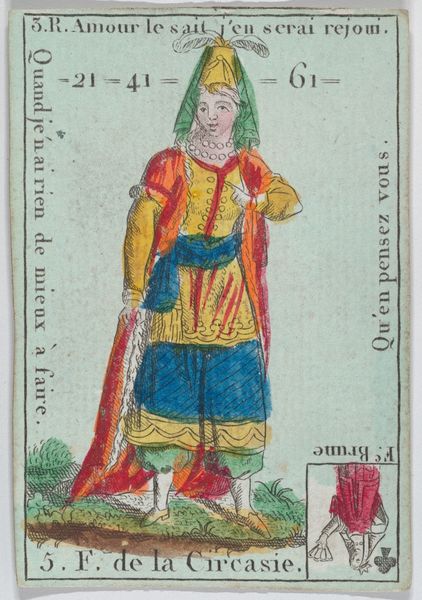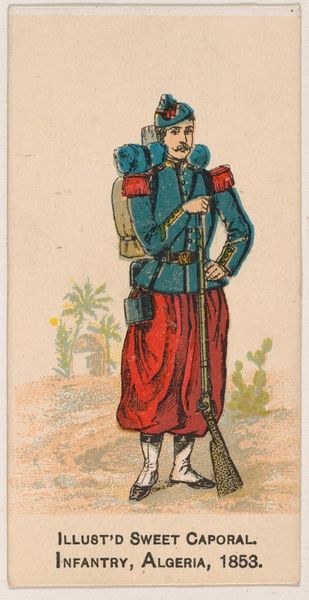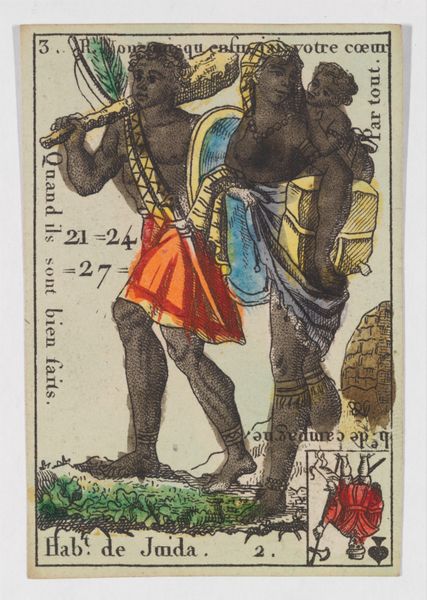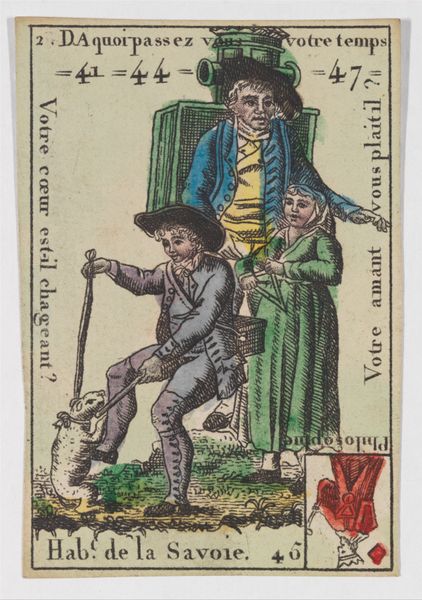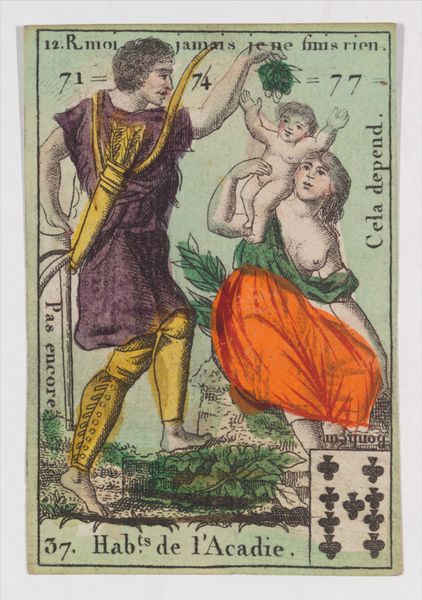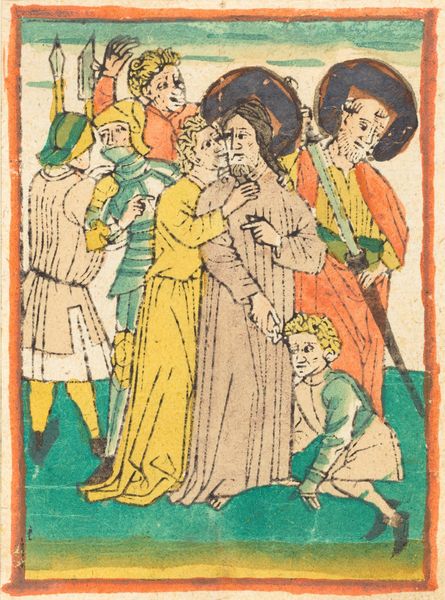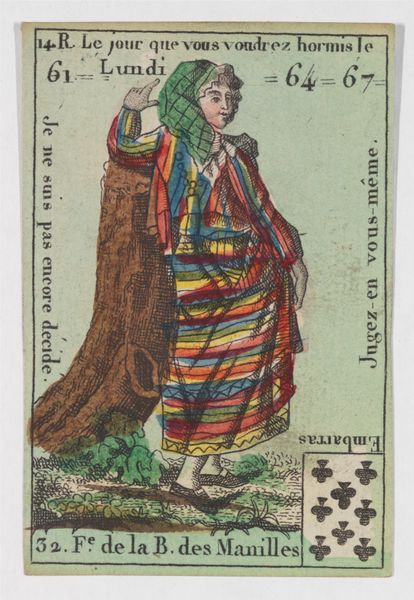
Hab.t de la Corse, from the playing cards (for quartets) "Costumes des Peuples Étrangers" 18th century
0:00
0:00
drawing, coloured-pencil, print, engraving
#
portrait
#
drawing
#
coloured-pencil
# print
#
coloured pencil
#
costume
#
watercolour illustration
#
genre-painting
#
history-painting
#
engraving
Dimensions: 3 3/16 × 2 1/16 in. (8.1 × 5.3 cm)
Copyright: Public Domain
Curator: This playing card, “Hab.t de la Corse,” part of a quartet series called “Costumes des Peuples Étrangers,” offers a glimpse into how eighteenth-century Europe viewed the world. Editor: The composition is unexpectedly engaging, even for something meant to be a simple playing card. The colors, though somewhat faded, give it an immediate visual punch and convey, I think, a theatrical and almost confrontational mood. Curator: Indeed. Created anonymously, most likely using engraving and colored pencil techniques, it shows us representations of Corsican dress, but clearly filtered through the lens of a particular era and social agenda. What do you see when you look closer? Editor: The most striking element, I think, is the juxtaposition of figures. You have a male figure, seemingly armed and standing assertively, next to a woman who is gesturing outward in a somewhat passive or pleading stance. It prompts thoughts about gender roles, power dynamics and representation of Corsican culture to outsiders. Curator: And notice the text worked into the composition, especially, "Jen'ai pas la force de vous refuser" —"I do not have the strength to refuse you." Considering such power dynamics gives such costumed portrait cards deeper resonances. Editor: Right, and this links directly to the way the image functions within the "Costumes des Peuples Étrangers" set. It invites reflection on how fashion and other cultural displays become shorthand for complex societal relations. And more questions arise: For whom was this card produced? And what assumptions did they hold about the people of Corsica? Curator: Yes, these playing cards would circulate, forming and cementing opinions, so in its design and distribution, you're encountering layers of history and visual rhetoric, contributing to popular perceptions and power structures. Editor: Thinking about this piece, it underscores the point that something as commonplace as a playing card could simultaneously reflect and actively shape social understanding. It's not merely a reflection; it’s an intervention. Curator: Precisely, a little snapshot filled with a multitude of contextual implications and loaded imagery. A very typical example of art serving socio-cultural aims!
Comments
No comments
Be the first to comment and join the conversation on the ultimate creative platform.
